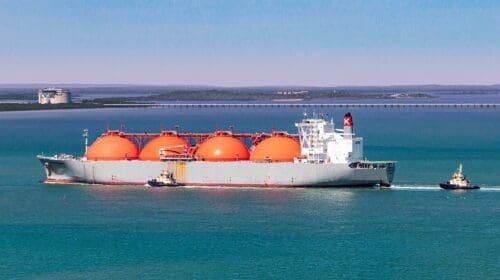Even though crude oil and natural gas production in the U.S. is on a record-setting pace, a majority of the oil companies that participated in a recent survey see positive and negative economic factors impacting future business activity.
The Dallas Fed Energy Survey’s business activity index released this week surveyed 147 oil and gas companies from Sept. 13-21 that revealed the industry continues to witness rising operating costs, but crude oil and natural gas prices are beginning to reverse many negative opinions.
“Firms reported rising costs for an 11th consecutive quarter,” according to the Dallas Fed. “Among oilfield services firms, the input cost index remained positive but declined from 41.2 to 33.4. Among E&P firms, the finding and development costs index edged up from 14.9 to 18.3. Additionally, the lease operating expenses index was essentially unchanged at 25.6.”
While drilling activity has declined during the past year, crude oil prices are up.
Drilling activity is down 20 percent since September 2022, according to the Baker Hughes Rotary Rig Count. The U.S. rig count, a key economic indicator, is 615 this week compared to 767 a year ago.
The crude oil price has moved upward since July. Crude oil closed at $93 per barrel on the New York Mercantile Exchange on Wednesday, which is a $20 (28 percent) increase since this summer.
The business activity index, the survey’s broadest measure of conditions, increased from 0 in the second quarter to 10.9 in the third quarter, according to the survey.
The company outlook index moved into positive territory in the third quarter, jumping from -9.1 to 36.0, the Dallas Fed reported. Optimism was more pronounced among E&P firms; the outlook index was 46.8 for E&P firms compared with 14.9 for services firms. The overall outlook uncertainty index remained positive but plunged 30 points to 6.8, suggesting that while uncertainty continued to increase on net, fewer firms noted a rise in the recent quarter.
The oil production index increased from 8.0 in the second quarter to 26.5 in the third. Meanwhile, the natural gas production index rose from 2.1 to 15.4.
The aggregate employment index posted an 11th consecutive positive reading but declined from 13.1 in the second quarter to 5.5 in the third, The Dallas Fed reported. “While the aggregate employment index was positive, the single-digit reading indicates employment was little changed from the prior quarter. The aggregate employee hours index was relatively unchanged at 9.6. Meanwhile, the aggregate wages and benefits index declined from 34.5 to 24.5.”
Oilfield services firms reported continuing deterioration in most indicators. The equipment utilization index remained negative but edged up from -7.9 in the second quarter to -4.2 in the third. The operating margin index declined from -21.6 to -30.7. The index of prices received for services was relatively unchanged at 2.1.
Alex Mills is the former President of the Texas Alliance of Energy Producers.
Alex Mills is the former President of the Texas Alliance of Energy Producers. The Alliance is the largest state oil and gas associations in the nation with more than 3,000 members in 305 cities and 28 states.
Oil and gas operations are commonly found in remote locations far from company headquarters. Now, it's possible to monitor pump operations, collate and analyze seismic data, and track employees around the world from almost anywhere. Whether employees are in the office or in the field, the internet and related applications enable a greater multidirectional flow of information – and control – than ever before.









